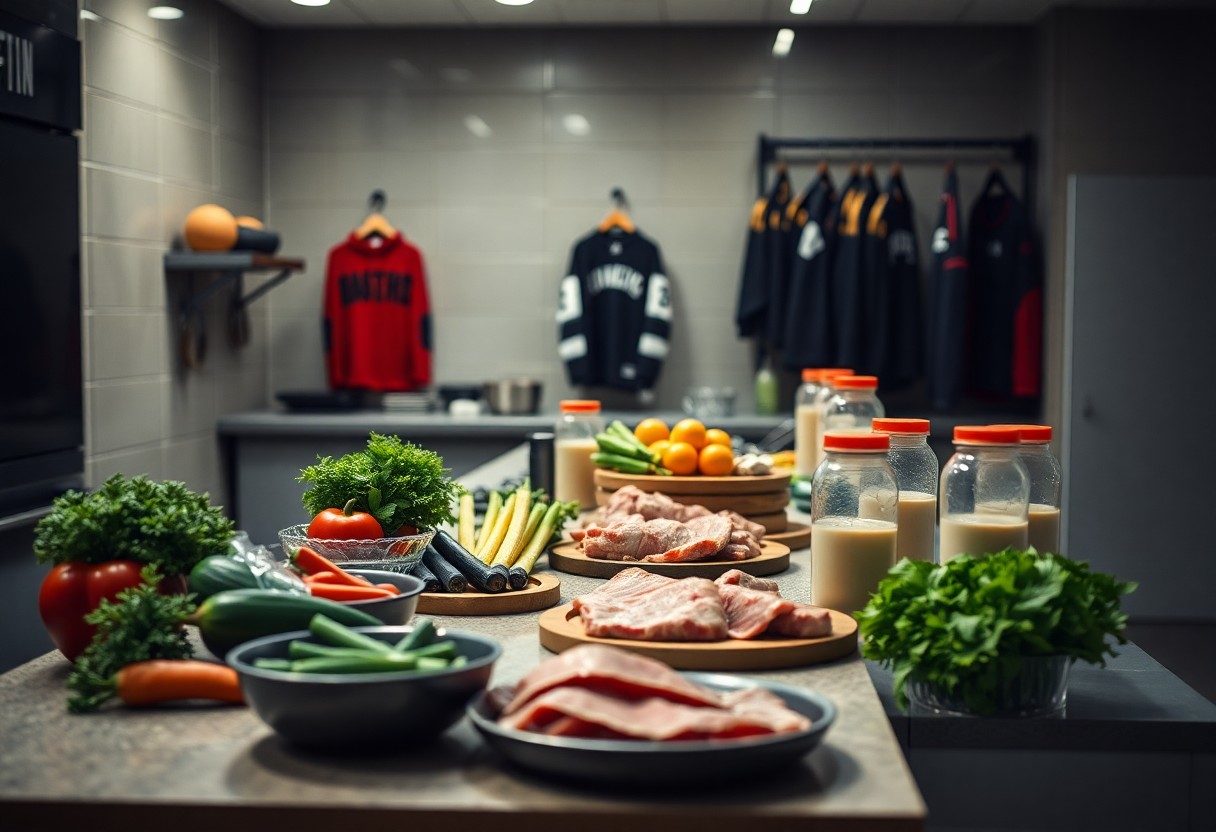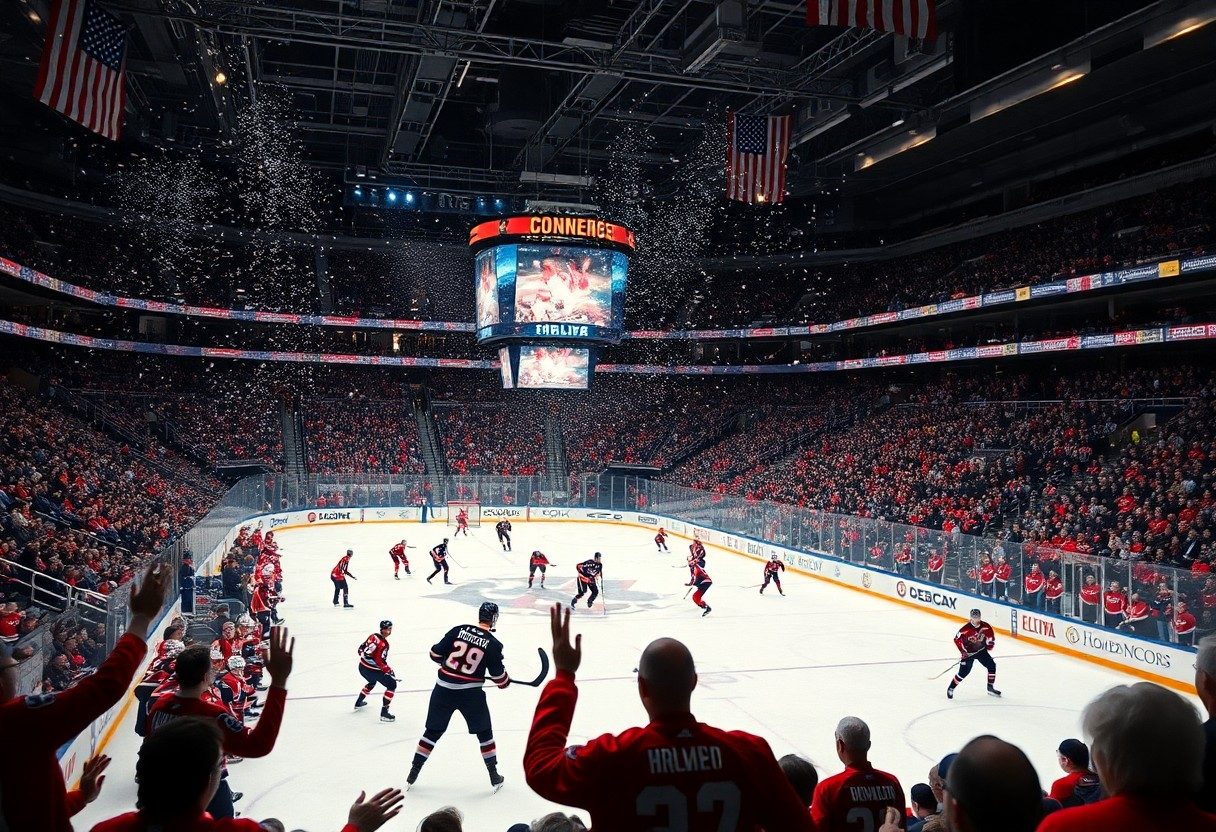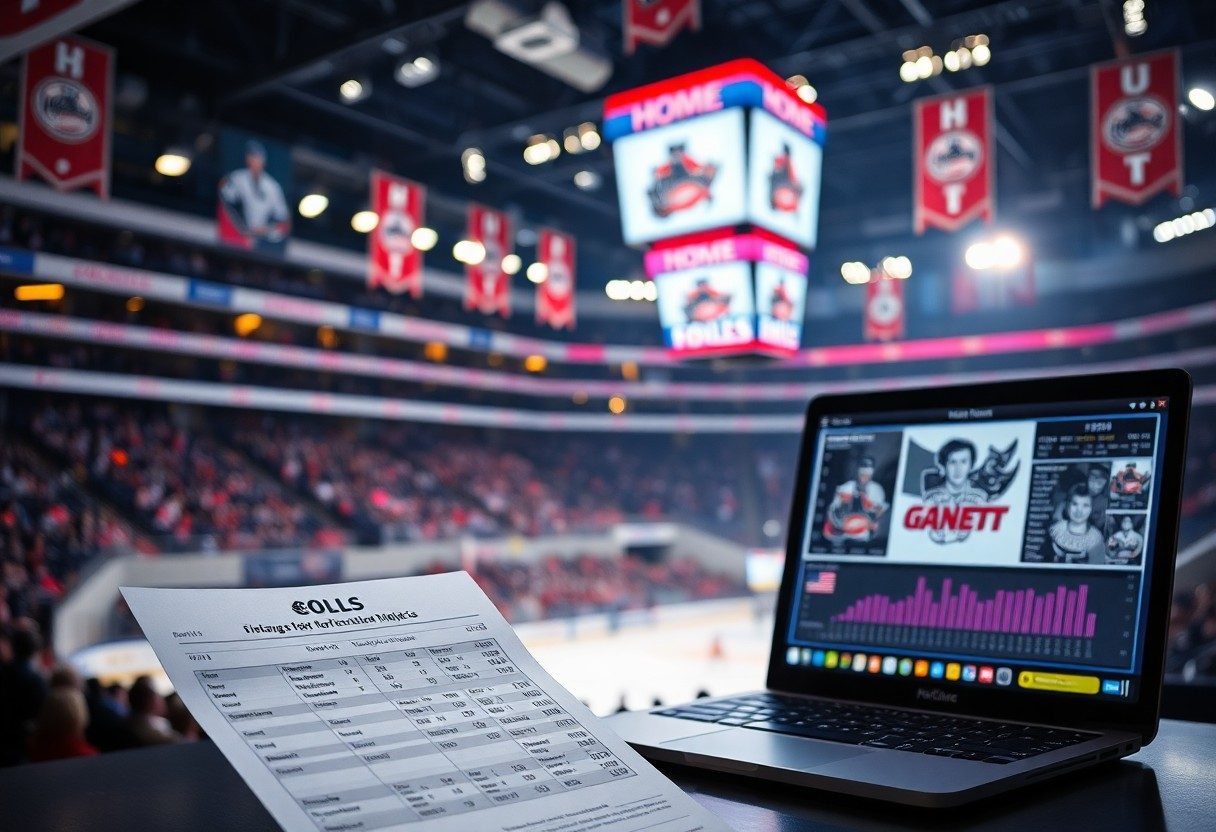Over the years, top NHL players have revealed their nutrition and fitness strategies that contribute to their elite performance on the ice. These athletes prioritize balanced diets rich in lean proteins, healthy fats, and complex carbohydrates, while also emphasizing the importance of hydration. Additionally, their training regimens focus on building strength, endurance, and flexibility, minimizing the risk of injury. This guide unveils the best-kept secrets behind their routines, helping fans and aspiring players alike emulate their success in achieving peak physical condition.
Types of Nutritional Approaches
Top NHL players follow various nutritional approaches tailored to their individual needs, emphasizing performance enhancement. These approaches often involve balanced macronutrient ratios, meal timing, and hydration strategies to maintain energy levels during intense gameplay. Each player’s diet may differ, factoring in overall health and performance goals.
- Ketogenic Diet – Low-carb, high-fat
- Paleo Diet – Whole foods, minimal processing
- Plant-Based Diet – Focus on fruits, vegetables, and grains
- Zone Diet – Balanced ratio of macronutrients
- Intermittent Fasting – Eating windows for energy management
| Nutritional Approach | Description |
| Ketogenic Diet | Focuses on low carbohydrates to fuel performance. |
| Paleo Diet | Emphasizes non-processed foods for optimal health. |
| Plant-Based Diet | Increases energy and recovery through fruits and veggies. |
| Zone Diet | Maintains a specific macronutrient ratio for balance. |
| Intermittent Fasting | Regulates energy by controlling meal timing. |
Macronutrients for Performance
Successful NHL players recognize the impact of macronutrients on their performance, focusing on carbohydrates, proteins, and fats. Carbs provide the necessary fuel during games, while proteins assist in muscle recovery and repair. Healthy fats contribute to sustained energy and hormonal balance, ensuring players remain at peak performance throughout the season.
Micronutrients and their Impact
Micronutrients play a significant role in energy production, recovery, and overall health. Players prioritize vitamins and minerals like Vitamin D, Iron, and Calcium, which support bone health, muscle function, and immune response. A deficiency in these nutrients can impair athletic performance, making regular intake vital for peak physical condition.
Micronutrients are crucial for maintaining optimal athletic performance. For instance, Vitamin D improves muscle strength and recovery time, while Iron is critical for oxygen transport, enhancing endurance. Players often undergo nutritional assessments to identify potential gaps in their diets, implementing targeted supplements or adjustments to ensure they meet their performance needs. Assume that the right balance of micronutrients can significantly enhance not just endurance, but also cognitive function on the ice.
Essential Fitness Practices
Elite NHL players maintain a rigorous fitness regimen that supports their intense game demands. This includes a mix of strength training, cardiovascular conditioning, and flexibility work. These practices not only enhance physical performance but also reduce the risk of injury, allowing players to maximize their abilities throughout the grueling season.
Strength Training Regimens
Strength training for NHL players focuses on functional movements that parallel on-ice actions. Exercises like squats, deadlifts, and lunges are crucial for building lower body strength, while upper body workouts involving bench presses and pull-ups enhance shooting power. Many teams incorporate resistance bands and medicine balls to improve core strength and stability, vital for balance during gameplay.
Cardiovascular Conditioning Techniques
Top NHL players engage in diverse cardiovascular conditioning techniques that boost endurance and speed. High-intensity interval training (HIIT) is common, incorporating short bursts of maximum effort followed by recovery periods. Activities such as sprinting, cycling, and swimming not only elevate heart rates but also simulate the sudden shifts in intensity experienced during games, ensuring players can perform at peak levels.
For example, many players dedicate time to track running and agility drills that mimic on-ice scenarios. A structured regimen might involve sprinting 100 meters followed by 30 seconds of rest, repeating multiple times to build anaerobic capacity. This approach enables athletes to maintain high energy levels throughout periods of fast-paced play, which is crucial in a sport as demanding as hockey. Agility ladders and cone drills further enhance quick footwork and reaction times, vital skills when retreating or advancing during a game.
Tips from Elite NHL Players
Elite NHL players emphasize a combination of effective strategies to elevate their performance. Key insights include a focus on personalized nutrition, consistently staying hydrated, and adopting targeted training routines. These players prioritize rest and recovery, balancing their workouts with proper sleep to optimize their physical and mental performance. Incorporating strength training and cardiovascular workouts also remain fundamental to their annual preparation.
- Nutrition tailored to individual needs
- Hydration before, during, and after games
- Rest is as important as training
- Strength training for injury prevention
- Cardio for enduring stamina
Assume that these optimized practices can drive budding athletes toward their full potential.
Daily Routine Recommendations
Daily routines of elite NHL players often include structured schedules that integrate training, nutrition, and recovery. Most start their day with a balanced breakfast rich in proteins and carbohydrates followed by concentrated workouts. They often include hydration breaks and snack intervals to maintain energy levels throughout the day. Evening routines typically focus on stretching and mental wind-down techniques. Frequent analysis of performance metrics ensures continuous improvement.
Mental Preparation Strategies
Mental preparation is foundational for NHL players, who often rely on visualization and mindfulness techniques to enhance focus and reduce anxiety. Engaging in visualization practices helps them mentally rehearse high-pressure scenarios. Many players also employ mindfulness exercises to stay present during games, allowing them to react instinctively rather than emotionally. Journaling and discussing their thoughts with mentors can reinforce mental resilience.
In-depth research highlights that players who utilize mental preparation strategies often report improved performance metrics in critical situations. For example, players practicing visualization have shown a greater ability to score in clutch moments. By establishing clear goals and consistently reflecting on their mental attitudes, athletes can foster an internal balance that translates directly to on-ice success. Elite players frequently stress that aligning mental and physical routines is vital for maintaining peak athletic performance.
Step-by-Step Guide to Meal Planning
| Step | Description |
|---|---|
| 1. Assess Your Needs | Determine caloric requirements based on activity level, age, and goals. |
| 2. Choose Nutrient-Dense Foods | Focus on whole grains, lean proteins, fruits, and vegetables. |
| 3. Plan Your Meals | Create a weekly menu that incorporates balanced meals and snacks. |
| 4. Prepare Ingredients | Batch cook and prep popular meals to save time during the week. |
| 5. Adjust as Needed | Evaluate and adapt your meal plan based on progress and feedback. |
Creating Balanced Meals
Each balanced meal should include a combination of carbohydrates, proteins, and healthy fats. For instance, pairing grilled chicken with quinoa and steamed broccoli provides an ideal mix of nutrients. NHL players often incorporate colorful vegetables for vitamins, while whole grains and lean proteins serve to support muscle recovery and overall performance.
Timing Nutrient Intake
Strategically timing meals and snacks allows players to maximize energy levels and recovery. Consuming complex carbohydrates and proteins 30 minutes post-exercise replenishes glycogen stores and supports muscle repair. Additionally, spacing meals every 3-4 hours keeps metabolism steady and energy consistent throughout the day, crucial for maintaining performance.
Post-workout, players benefit significantly from a nutrient-rich recovery meal. Studies show that a 30:70 ratio of carbohydrates to protein post-exercise accelerates recovery and muscle synthesis. For NHL players, this might mean a smoothie with banana, protein powder, and spinach, ensuring nutrients are absorbed quickly. Timing these intakes around training sessions is imperative for optimizing performance and preventing fatigue during grueling schedules.
Factors Influencing Performance
The factors influencing performance in the NHL are numerous and interconnected, impacting every player’s game. Key elements include training regimens, nutrition plans, and mental focus. Players often undergo rigorous analysis of their physical and psychological states to maximize their potential. They must also adjust their performance strategies based on opponents and game conditions. Assume that these factors provide a competitive edge over their counterparts.
- training regimens
- nutrition plans
- mental focus
- opponents
- game conditions
Individual Body Types
Individual body types play a significant role in how NHL players train and perform. Each player’s metabolic rate, muscle composition, and body fat percentage uniquely influence their approach to nutrition and strength training. Understanding these variations allows tailored programs for optimal performance. This ensures each player can maintain peak physical condition suited to their body type.
- metabolic rate
- muscle composition
- body fat percentage
- nutrition
- peak physical condition
| Body Type | Training Focus |
|---|---|
| Endomorph | High-intensity workouts, cardio for fat loss |
| Ectomorph | Strength training, high-calorie intake |
| Mesomorph | Balanced training, mix of strength and agility |
| Combination | Customized approach based on dominant traits |
| Genetic Factors | Account for predisposition to muscle gain or fat storage |
Seasonal Adjustments in Training
Seasonal adjustments in training are vital for NHL players to maintain their competitive edge throughout the grueling season. Conditioning, skill development, and game strategy training intensify as players transition into preseason and peak during playoffs. Altering workout frequency, rest periods, and nutrition based on seasonal demands not only enhances energy levels but also aids in recovery. Tailoring these adjustments maximizes performance and minimizes injuries.
Pros and Cons of Different Diets
| Pros | Cons |
|---|---|
| Can enhance performance through tailored nutrition | May require extensive meal prep |
| Promotes healthy weight management | Potential nutrient deficiencies |
| Improves recovery time | Can be socially restrictive |
| Encourages variety in food choices | Compliance may be challenging |
| Supports long-term health | Information overload can be confusing |
| Boosts energy levels | Cost of specialty foods can be high |
| Integrates whole foods effectively | Not all diets suit every individual |
| Adapts to fitness goals | Rapid changes may lead to temporary results |
Popular Diets Among NHL Players
Among NHL players, the Paleo diet, Keto diet, and plant-based diets are gaining traction. These diets focus on whole foods, healthy fats, and lean protein, all vital for optimal performance. Players like Ryan Getzlaf advocate for reducing processed sugars, while Matt Duchene promotes a more plant-forward approach. Such variations allow athletes to tailor their nutrition to personal preferences and performance needs.
Understanding Nutritional Myths
Nutritional myths can cloud the decisions of athletes and fans alike. Common misconceptions include the belief that all fats are bad or that carbohydrates must be avoided entirely for weight loss. It’s vital to debunk these myths, as healthy fats are crucial for hormone production, and carbohydrates fuel high-intensity workouts. Understanding the role of macronutrients is vital for achieving peak performance and maintaining overall health.
For instance, many players may shy away from carbohydrates due to popular diet trends, yet carbohydrates are the body’s primary energy source during high-intensity activities, such as hockey. The right balance of macronutrients supports training, recovery, and game-day performance. Furthermore, the misconception that protein is the sole nutrient for muscle gain overlooks the vital roles of fats and carbs in a player’s nutrition plan.
Summing up
Presently, the nutrition and fitness strategies of elite NHL players underscore the significance of tailored diets and rigorous training regimens. By focusing on specific macronutrient ratios, hydration, and recovery practices, players enhance their performance and longevity in the sport. Emulating these practices can provide valuable insights for athletes at any level seeking to improve their game. Ultimately, understanding the practices of top players offers a roadmap for achieving peak physical condition and sustained excellence in hockey.
FAQ
Q: What role does nutrition play in the performance of top NHL players?
A: Nutrition is vital for maximum energy, recovery, and overall health. Top NHL players focus on a balanced diet rich in lean proteins, healthy fats, carbohydrates, vitamins, and minerals to sustain their intense training and gameplay demands.
Q: How do NHL players manage to balance their workout routines with travel schedules?
A: NHL players utilize personalized fitness plans tailored to their travel itineraries. They often incorporate bodyweight exercises, resistance bands, and adaptable workouts that can be performed in hotel rooms to maintain their fitness levels while on the road.
Q: What specific dietary supplements do top NHL players use?
A: Many top NHL players use supplements such as protein powders, omega-3 fatty acids, electrolytes, and multivitamins to support their nutrition. These supplements help enhance recovery, reduce inflammation, and ensure they meet their nutritional goals, especially during demanding seasons.












